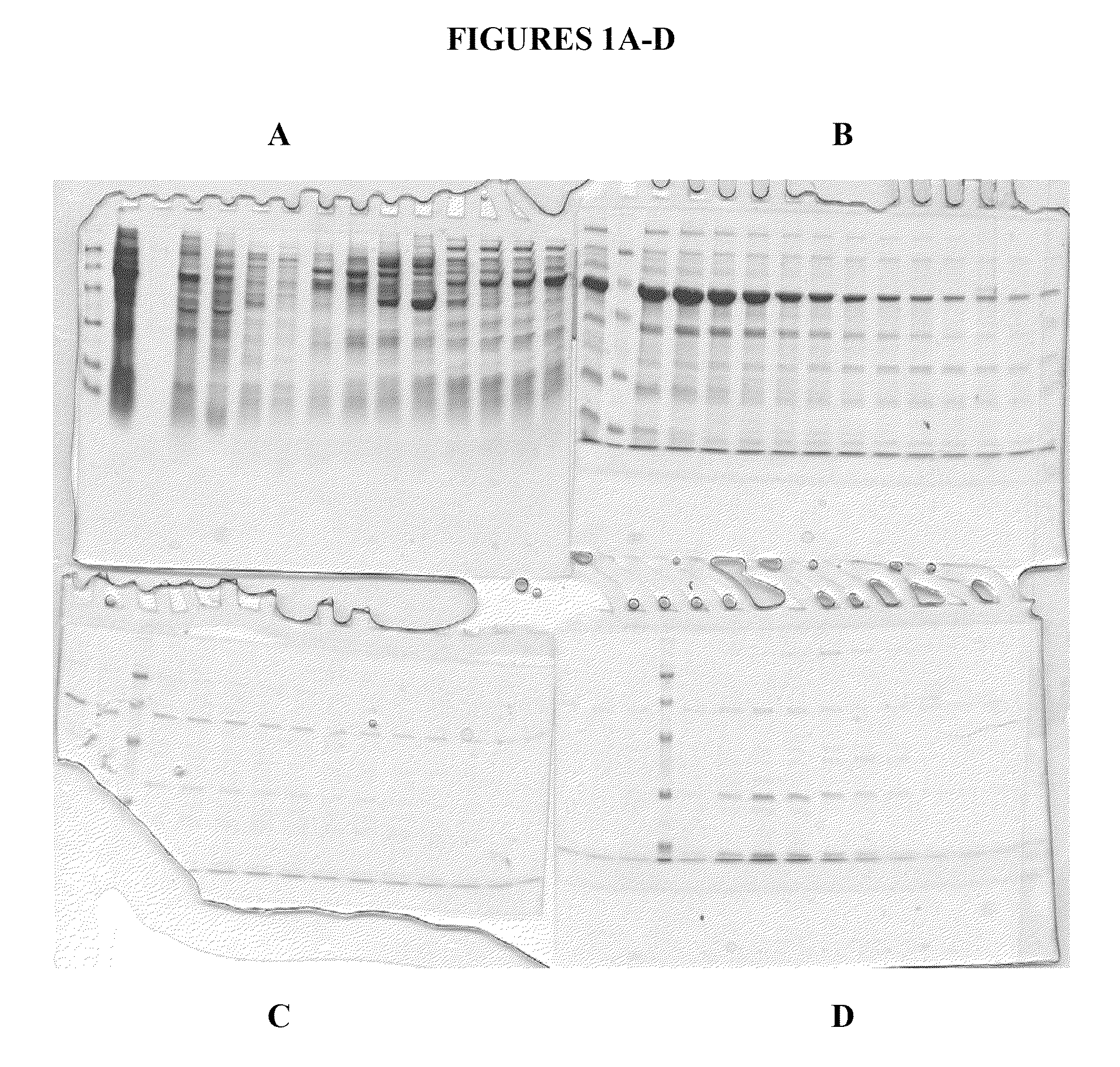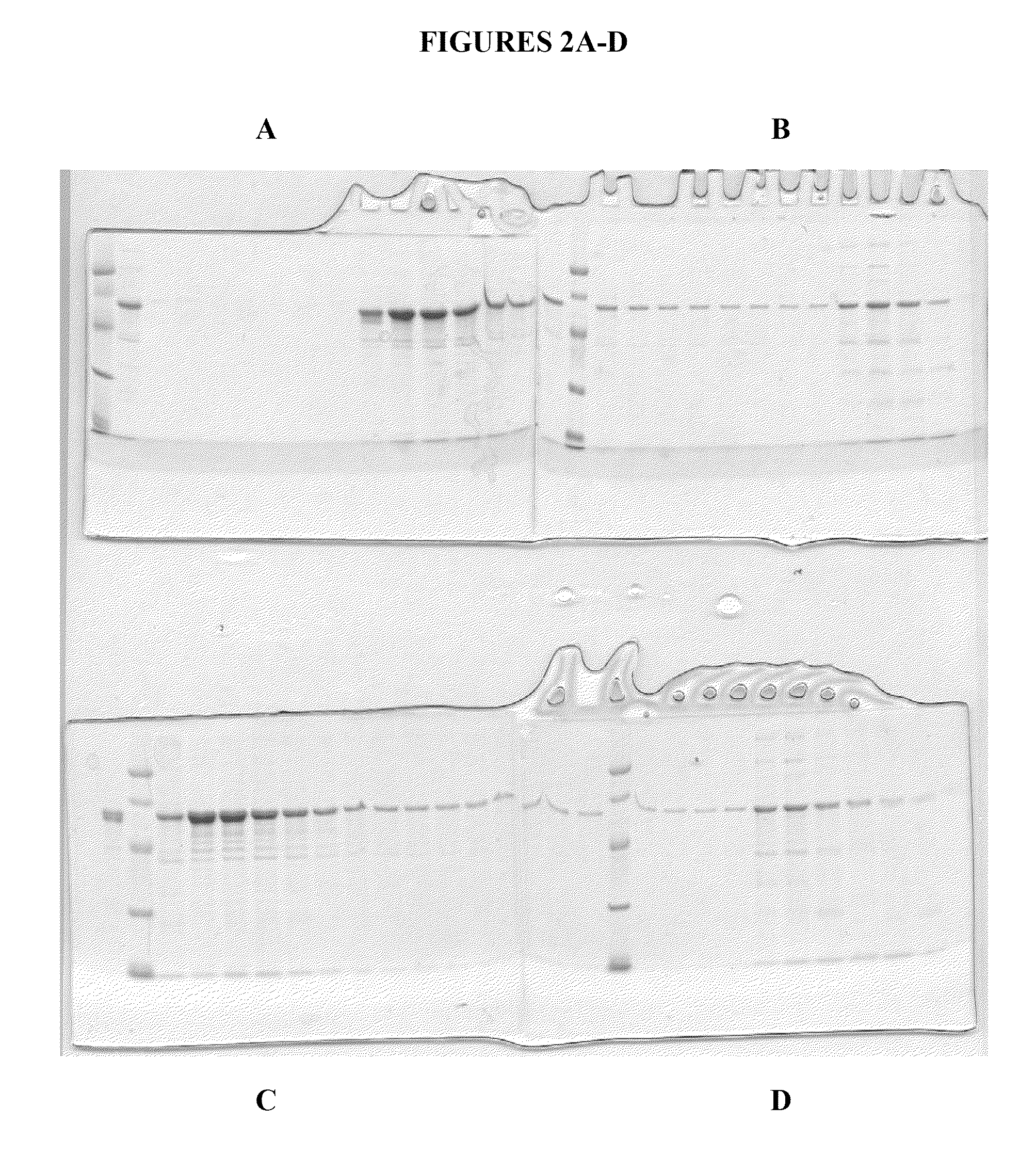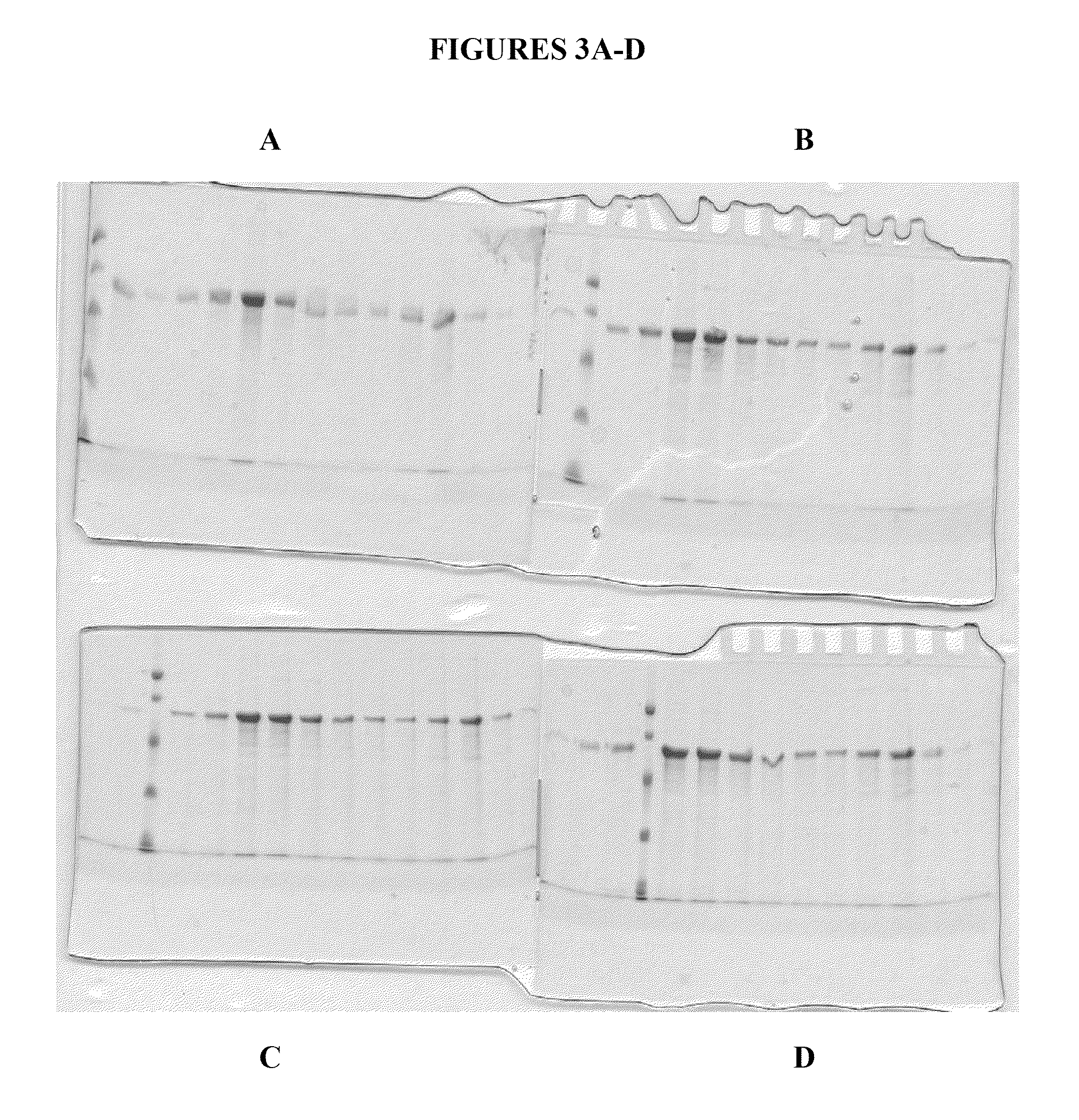Compositions and methods for purifying calreticulin
a technology of purification method and calreticulin, which is applied in the field of composition and methods for purifying calreticulin, can solve the problems of undesirable tagged proteins, inability to remove tags, and inability to achieve the native function of proteins,
- Summary
- Abstract
- Description
- Claims
- Application Information
AI Technical Summary
Benefits of technology
Problems solved by technology
Method used
Image
Examples
example 1
Cloning of the Human Calreticulin cDNA
[0081]PCR reactions were carried out under standard, manufacturers conditions unless otherwise noted. Likewise, except where noted, standard molecular techniques such as restriction endonuclease digestions and ligations may be carried out under any suitable standard conditions.
[0082]The PCR-driven amplification of human calreticulin cDNA (ATCC clone #3767728, GenBank accession #AW239363) was carried out using the following sets of primers:
[0083]
(SEQ ID NO: 1)Forward: 5′-ATA CTC GAG GAG CCT GCC GTC TAC-3′(SEQ ID NO: 2)Reverse: 5′-AGG GAA TTC CTA CAG CTC GTC C-3′
[0084]The underlined EcoR1 and restriction sites were used for cloning. In certain experiments, the primers (SEQ ID NO:11) GL96-seq.F: ATGCCATAGCATTTTTATCCA and (SEQ ID NO:13) G197-SEQ.R: ACAGATTAAATCAGAACGCA were used.
[0085]Human calreticulin was amplified according to the following procedure:[0086]1. Human calreticulin cDNA was amplified from plasmid pPIC9-human CRT (ATCC Accession No.: ...
example 2
Expressing and Purifying Human Calreticulin in E. coli
[0109]pBAD expression vectors encoding human calreticulin (pBADhCRT) were made as described in Example 1. While both amp and kan resistant vectors are available, the Kan resistant clone has slightly increased level of expression and is preferred by the FDA for pharmaceutical purposes. While numerous suitable expression strains can be used, the E. coli strain used for expression in the present examples, was Rosetta (obtained from Invitrogen (Carlsbad, Calif.) TOP10F′. Prior to protein purification, the pH of each buffer was confirmed. For protein purification, all work was performed in the cold room unless specified. Protease inhibitor cocktail+PMSF (phenylmethanesulphonylfluoride)+Benzamidine (for details see buffers composition section below) were added to all buffers prior to use. The protease inhibitors are optional and may be omitted for the last chromatography step.
Buffers and Solutions for Protein Expression and Purificati...
example
[0256]5 μl of sample in 995 μl of Low-Buffer (1:200)
[0257]A280 is 0.1256×200=25.12
[0258]25.12 / 82975×1=0.0003027M
[0259]0.0003027 M×49142.6(g / L) / 1M=14.875 g / L
[0260]FIG. 4 shows a Coomassie Blue stained gel of purified human calreticulin in the amounts of 7.5 μg, 15 μg and 30 μg of human CRT, purified as described above. The gel shows final purified samples after the two ion chromatography purifications (i.e., Q-Sepharose followed by HRT chromatography) followed by one hydrophobic chromatography purification (ISO chromatography with 20-25% ammonium sulfate elution).
[0261]In a preferred embodiment, the two chromatography steps followed by the hydrophobic chromatography step, are performed immediately following one another. However, in certain circumstances it is useful to store a sample (at −20 or other suitable temperature, or even lyophilized (dry powder) after any one of the chromatography steps prior to completing the three step purification of calreticulin. Thus, the present invent...
PUM
| Property | Measurement | Unit |
|---|---|---|
| melting temperature | aaaaa | aaaaa |
| Tm | aaaaa | aaaaa |
| Tm | aaaaa | aaaaa |
Abstract
Description
Claims
Application Information
 Login to View More
Login to View More - R&D
- Intellectual Property
- Life Sciences
- Materials
- Tech Scout
- Unparalleled Data Quality
- Higher Quality Content
- 60% Fewer Hallucinations
Browse by: Latest US Patents, China's latest patents, Technical Efficacy Thesaurus, Application Domain, Technology Topic, Popular Technical Reports.
© 2025 PatSnap. All rights reserved.Legal|Privacy policy|Modern Slavery Act Transparency Statement|Sitemap|About US| Contact US: help@patsnap.com



